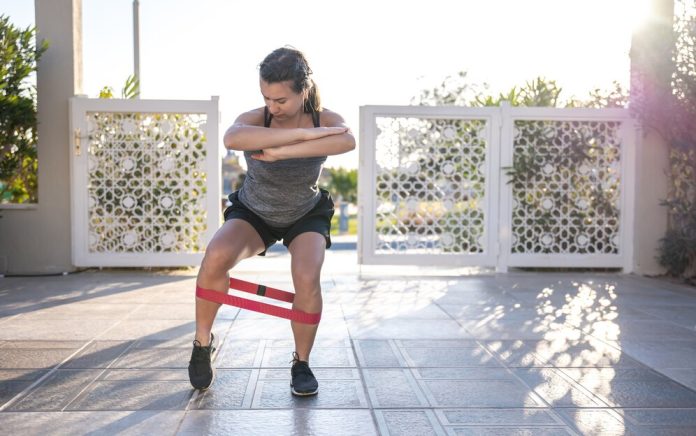Many people who are into physical exercise want to have big biceps, of course. While barbells and dumbbells have traditionally been used for biceps training, resistance bands have recently become more popular due to their efficiency and adjustability.
And here in this guide, we’ll go over all the key principles and techniques that will help you build biceps with resistance bands So, let’s continue reading!
What are the Basic Understandings?
When stretched, resistance bands like those made of rubber or latex provide some degree of resistance. They are available in a wide range of sizes, forms and degrees of resistance, so they can be used by people of varying physical abilities. Moreover, there are a number of benefits to using resistance bands for bicep exercises, such as:
- Variable Resistance
Resistance bands, in comparison to traditional weights, provide progressively more challenging workouts as they are stretched. Because of this, the top of the action is where the most resistance is applied, which is ideal for working the biceps’ peak.
- Portability
Because of their small size and portability, resistance bands are great for use both at home and on the go. They are compact enough to fit in a suitcase or gym bag, so you can bring your exercise with you everywhere you go.
- Joint-Friendly
Resistance bands are a good option for those with joint problems since they are easier on the body than lifting big weights and provide less danger of damage.
- Versatility
Incorporating resistance bands into your workout routine is a smart move since they can be utilized for a broad variety of exercises and muscle groups.
What are the Key Principles for Bicep Growth with Resistance Bands?
Progressive Overload
Regardless of the kind of weight training apparatus you employ, the idea of progressive overload remains the same. Increasing the difficulty of your exercises over time will help you build stronger muscles. And as you become stronger, you can raise the intensity of your resistance band workouts by switching to bands with a greater resistance level.
Choose a band that will enable you to complete three sets of eight to twelve reps while maintaining excellent form. In order to raise the degree of difficulty, you may use thicker bands or double up on bands to create more stress. This relentless stress will eventually lead to bigger biceps.
Exercise Selection
When training your biceps using resistance bands, it’s important to choose the right exercises. The following are examples of good resistance band workouts for the biceps:
- Bicep Curls
Position yourself in the exact middle of the band, with your feet hip-width apart. Hold the band with your hands facing forward in a curling motion towards your shoulders, keeping your elbows close to your sides.
- Hammer Curls
The same motion as bicep curls, but with the palms of the hands facing each other. It strengthens the brachialis muscle, which sits underneath the biceps and contributes to a thicker upper arm.
- Resistance Band Pull-Aparts
Put your hands on the band with your arms outstretched in front of you, then pull it apart by extending your hands and working your biceps.
- Preacher Curls
Put the resistance band beneath your feet while sitting on a chair or bench. Curl your upper arms while supporting them on the bench, holding the band with your palms facing up.
Time under Tension
Another crucial aspect of growing muscles is the duration of Time under Tension (TUT). Time under tension describes how long your muscles are working throughout a set. Targeting a moderate TUT with regulated tempo activities is optimal for bicep development. Each repetition is typically split into a two-second concentric (or “lifting”) and eccentric (or “lowering”) phase.
Nutrition and Recovery
The growth of bigger biceps is dependent not only on training but also on diet and rest. Eating adequate protein, carbs, and good fats can help you gain muscle. For proper recuperation and muscle restoration, enough rest, sleep, and water are all crucial.
Consistency and Patience
It takes time and dedication to build a substantial bicep. Maintain a healthy diet, exercise regularly, and wait patiently for results. It may take some time, but eventually, you will see results.
Tracking Progress
Record your resistance band exercises, set and rep counts, and any alterations you make in a workout log. You’ll be better able to tailor your biceps workouts to achieve your goals if you know what techniques have been effective in the past.
Conclusion
When you follow the guidelines in this detailed article, using resistance bands to build your biceps is not only doable but also quite efficient.
That’s why, to achieve your fitness goals, you must prioritize the guidelines mentioned above. You can build powerful and visually beautiful biceps by implementing these ways into your workout routine. All in all, if you want bigger biceps, now is the time to start working out with resistance bands.
















